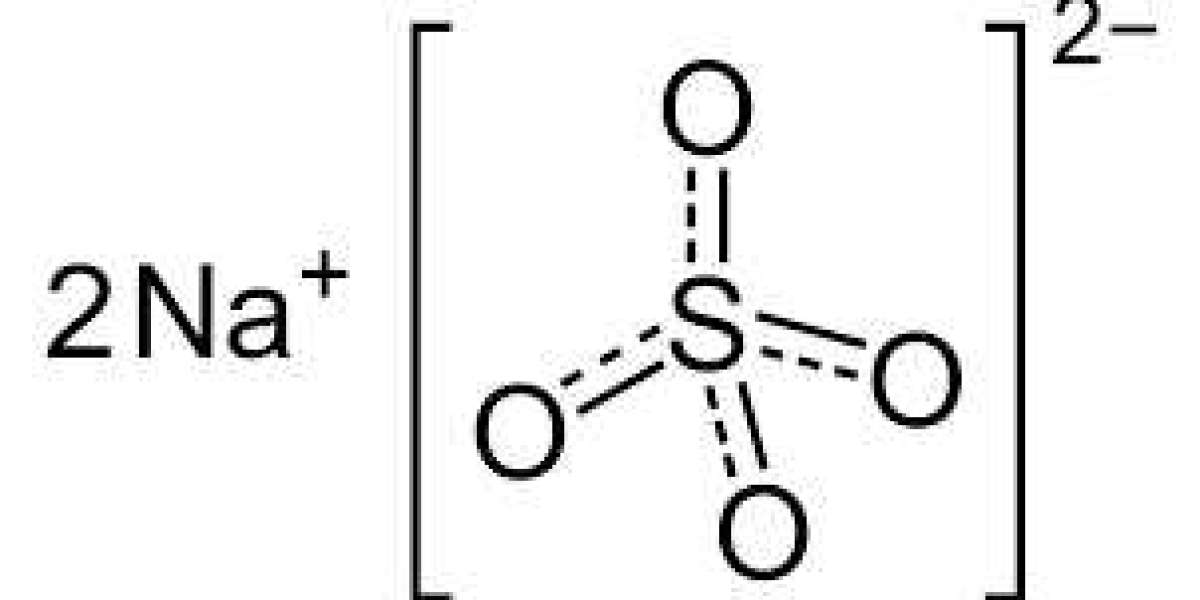Sodium sulfate is defined as the sodium salt of sulfuric acid. The sodium sulphate chemical formula is Na2SO4.
Anhydrous sulfate can be described as a white crystalline solid, which is also called mineral thenardite, whereas, the decahydrate Na2SO4.10H2O has been called either mirabilis or Glauber's salt.
When Na2SO4.7H2O is cooled, it is transformed to mirabilite, which is the natural mineral form of decahydrate. About two-thirds of the sodium sulfate's world's production is obtained from mirabilite. It is also formed from the by-products of chemical processes like hydrochloric acid production.
Discovery of Sodium Sulphate
Johann Rudolf Glauber discovered the sodium sulfate in 1625 from Austrian spring water there the hydrate form is called Glauber's salt. Because of its medicinal properties, he named it as salmirabilis (which is otherwise called miraculous salt).
Until the 1900s, the crystals present here were used as a general-purpose laxative, by reaction either with potash or potassium carbonate, where, in the 18th century, Glauber's salt was used as a raw material for the industrial production of soda ash. In the 19thcentury, the demand for soda ash increased, so the large-scale Leblanc process which produced the synthetic sodium sulfate has become the principal method in the production of soda ash.
At dietary levels, the excretion is primarily in the urine. Sulfates are found in the entire body cells, with the highest concentrations in bone, connective tissue, and cartilage. Sulfates also play a major role in many important metabolic pathways, including those involved in the detoxification processes.
There exist two types of sodium sulfate natural and by-product, which is also called synthetic.
Natural sodium sulfate can be produced from naturally occurring crystalline deposits and brines, which are found in Texas and California.
It is also found as a constituent of saline lakes, like the Great Salt Lake of Utah. And, the synthetic sodium sulfate is recovered as a by-product of different manufacturing processes.
Both sodium sulfate types have many useful and important applications in different consumer products.
In a survey of the top 50 basic organic chemicals and inorganic chemicals performed in the United States, sodium sulfate has ranked 47th regarding the quantity produced.
Resources
Sodium is the 6th most abundant element in the crust of Earth. Geologically, the sodium sulfate-bearing mineral deposits are young, majorly of post-glacial age.
It is also widespread in occurrence, and it is a common component of seawater and several alkalis or saline lakes.
Economic reserves of natural sodium sulfate are estimated up to 3.3 billion tons worldwide.
With world production of this natural sodium sulfate averaging up to 2.6 million tons per year, the supplies are sufficient to meet anticipated demand for many centuries.
The synthetic sodium sulfate quantity is dependent on the longevity of the manufacturing firms which are recovering by the sulfate product.
Lakes or surface depressions that contain no outlets and are fed by spring waters, which are flowing over volcanic rocks containing sulphide minerals often yield soluble sulphide salts, oxidized by contact with the air for sulfate production.



